Following a recent Thursday evening online sit, we started discussing the role of concentration in our practice. Afterwards it was suggested to me that I write a blog about this, as we talk a lot about mindfulness in our training (for obvious reasons), but it’s possibly not always apparent where concentration fits in.
The first thing to be clear about is that Mindfulness and Concentration are distinct – although linked – mental faculties. This is clearly outlined in Buddhism where, for example, Right Mindfulness and Right Concentration are both identified as separate steps on the Noble Eightfold Path, one of the Buddha’s most well-known teachings.
A useful starting place is to examine what we mean by concentration. Here, I have in mind an image of my 10 year old nephew sitting in front of “his device”, completely focused on a computer game for hours on end. While he is certainly very concentrated, I’d suggest that he’s not being very mindful, as he doesn’t appear to have any awareness of his body, his inner experience or of what’s going on around him. So, in itself concentration is not necessarily a positive state of mind, and if we allow ourselves to we can become concentrated on quite unwholesome things.

The Sri Lankan Buddhist monk, Bhante Gunaratna, describes concentration as being like a magnifying glass that can allow us to look into the deeper layers of our mind, while mindfulness directs what the magnifying glass looks at. Concentration is a one pointedness of mind, which requires effort to establish and maintain. When we become concentrated we supress thoughts and emotions; we focus on one thing, and shut out everything else. This might lead to a feeling of peace and calm while we’re doing the formal meditation, but this wears off after the meditation session, and doesn’t lead to any long term spiritual, psychological or personal growth.
That’s not to say that concentration isn’t important, and there are some forms of meditation that do emphasise this. This can result in especially obtaining what are called the “meditative absorptions” (Jhāna in Pali, or Dhyāna in Sanskrit) which may be associated with great clarity, as well as feelings of intense bliss, joy, and even clairvoyant experiences. While these mental states may be used by skilful meditators as a starting block for developing insight, more often than not, people “park up” (to use Rob Nairn’s phrase) in them, and the practitioner may start striving for particular meditative experiences.
When we learn to meditate, concentration and mindfulness go hand in hand, although it is mindfulness that directs the concentration. While concentration may shine a light on what is happening in our inner environment it doesn’t bring any understanding or wisdom to what is there; that is the job of mindfulness. Because of this, we generally give more emphasis to mindfulness, and this is considered to be the more important of these two mental factors.
How does this relate to the actual practices that we do within the Mindfulness Association? When we start our training we generally put more emphasis on one pointed meditation, for example in the “settling the mind” practice, where we focus in quite a narrow way on the breath, often with the aid of counting and/or gently regulating the length of the in-breath and outbreath. This can be seen as more of a concentration practice, which can help our minds to quieten. The important aspect of this practice is that we only do it for a few minutes at the start of a formal sitting session, and not as our main practice.
With practices such as the body scan and mindful movement, we learn how to distinguish between mindfulness and concentration, often using phrases such as “open field awareness” and “focused attention”, as we move our attention around our bodies.
In our main formal mediation practice when we work with a support (such as sound, the body or the breath) we rest our attention on this in a much lighter way than we do when we settle the mind, prioritising mindfulness over concentration. While it is concentration that keeps our attention on our meditation support, it is mindfulness that notices when we’re distracted and brings our attention back to the support. Unlike concentration, we can’t develop mindfulness by force, which is why in our training we always encourage people to try to let go of any striving and bring a “light touch” to the mindfulness support. In this way, mindfulness leads to insight and wisdom in a way that concentration in itself cannot.
There is therefore a dynamic balance between mindfulness and concentration in our practice, and this is constantly changing. When we start to meditate we put more emphasis on concentration, but we move towards giving more emphasis to mindfulness as we progress. While this is true for our training overall, we can often see this in individual meditation sessions.
Mindfulness has a knowing quality that is absent from concentration, which is reflected in Rob Nairn’s definition of “Knowing what’s happening, while it’s happening, without preference”. It is through mindfulness that we actually understand what is going on, and this allows us to train in it. While concentration is essential, mindfulness forms the heart of our practice, and cultivating this will naturally lead to us cultivating concentration; this is why we are the Mindfulness Association, and not the Concentration Association!
-Alan
Further reading:
Bhante Henepla Gunaratna, 2002. Mindfulness in Plain English. Wisdom Publications. Boston.
Joseph Goldstein, 2013. Mindfulness. A Practical Guide to Awakening. Sounds True. Boulder, Colorado.
To visit our website: please click here
To join our membership: please click here
Follow us on YouTube: please click here
Follow us on Facebook: please click here
Follow us on Instagram: please click here


Hi
Very useful and helpful view on the differences. Being fairly new this year to meditation I have sometimes “struggled” with feelings of focussing onto one thing too much, which kind of goes against the key point of accepting and being comfortable with what is there holistically. I am currently doing MBCT programme so will share this as I think it’s very helpful to have this distinction.
Chris
Thanks Alan, a lovely clear and helpful definition.